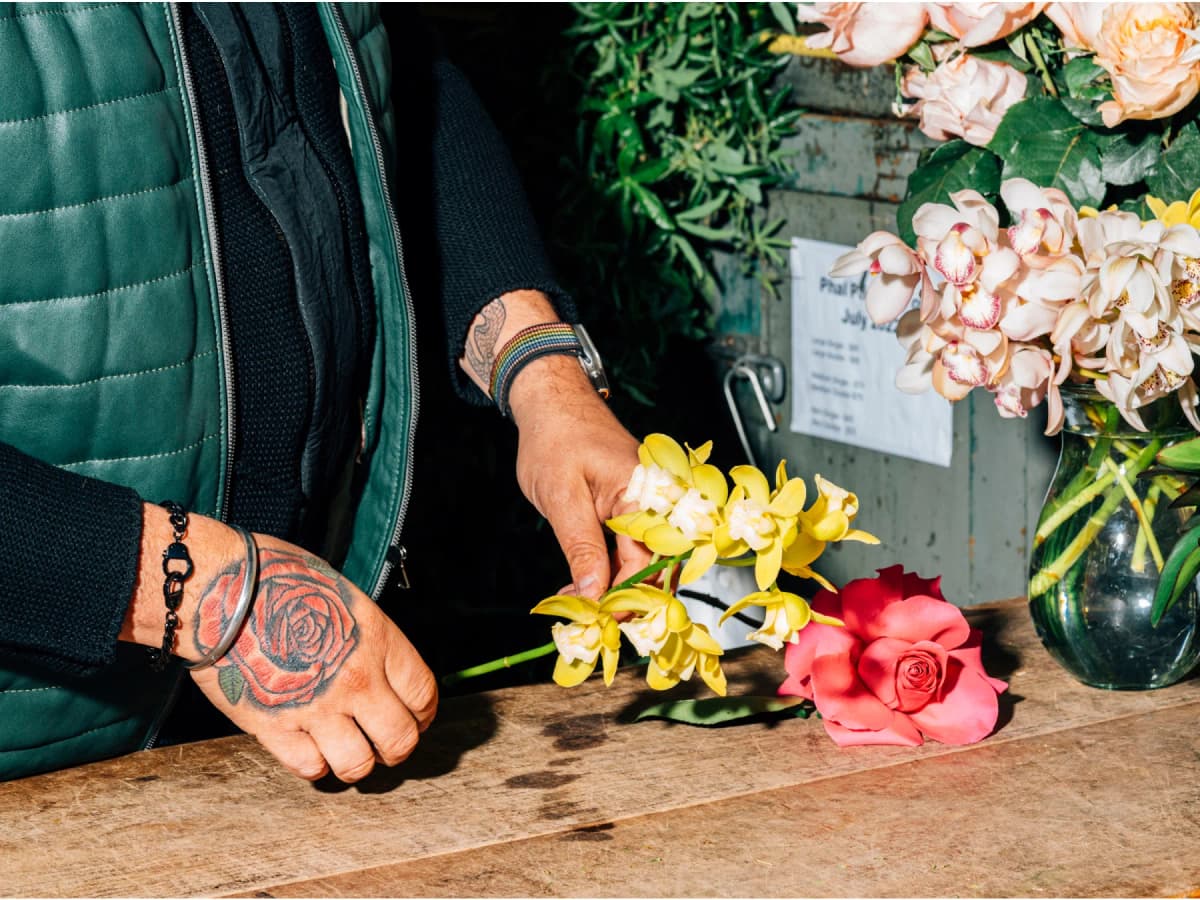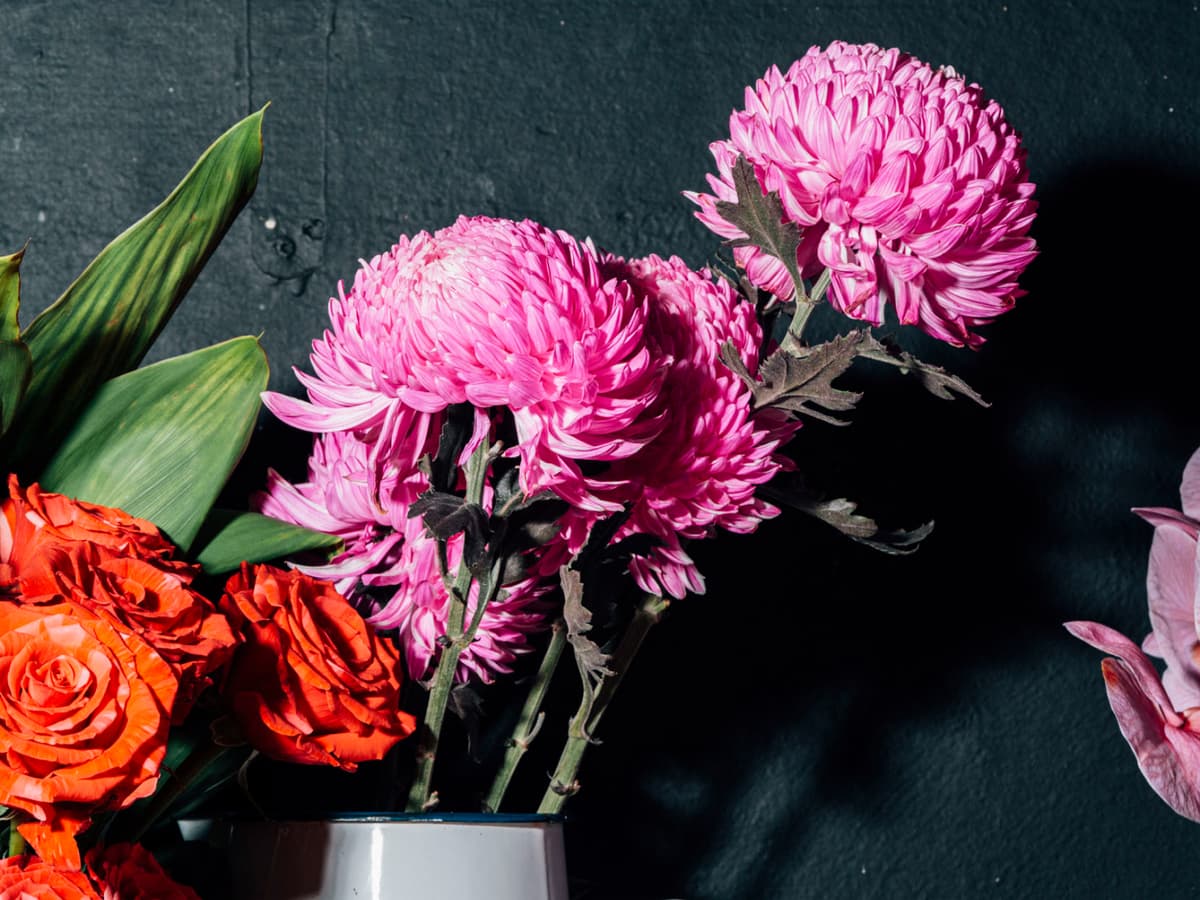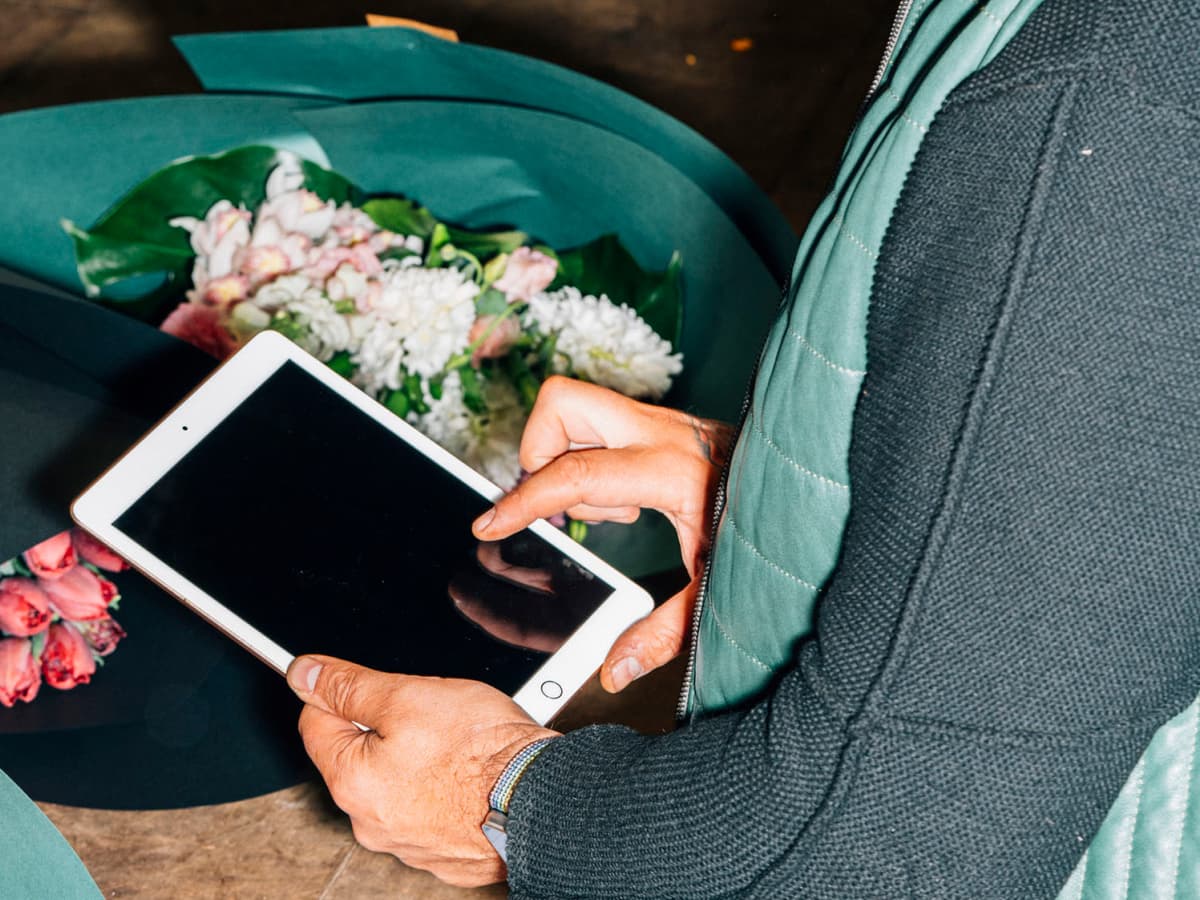
- Case Studies
Perennial Success: How a Sydney Florist Keeps Flourishing After Two Decades
Walking along Military Road in the Lower North Shore village of Mosman, you’ll be stopped in your tracks by a sweet smell of freesia and hyacinth, or by a friendly Italian shouting your name. Either way, you’ll know you’ve arrived at The Floral Craftsman.
The man behind the craft is Matt Bisaro, a stalwart identity of the busy shopping strip, who’s floral arrangements have been gracing the homes, weddings, and offices of Sydneysiders since 2003. Taking to customer service like he does to a delicate orchid, Matt’s warmth and careful attention is a large part of what’s kept the business thriving for so long. And in an industry that’s not only physically demanding, but also fluctuates with the ebb and flow of discretionary spending, perennial success is hard to come by. Matt spoke to us about the changing face of floristry, the importance of relationships, and how updating his payment technology helped him navigate a challenging economy.

A business rooted in relationships.
“Hi Jenny! They’re $15 a bloom!” Matt’s voice booms across the shop. Mid-way through explaining what he believes is the key to The Floral Craftsman’s long-running success, this interjection says it all. “It's just relationships,” he affirms. “Mosman is a village… they're very community and family focused. I come from a really big family, so it's normal for me. I like it, I like knowing people.” His infectious laugh and exuberant energy make it no surprise that people like knowing him too. And it’s not just his customers: “Staff love it. I do tend to keep them for a good five years or more… They might go away for a few years but all of a sudden I'll get a phone call and they want to come back! That has happened a lot with multiple staff. We always say there's a revolving door here.” Investing time into training and supporting his staff while also building a strong rapport with his customers has fostered a supportive community that has helped propel the business through more than one economic downturn.
Passion, hard work & quality.
Reflecting on the tougher moments in the business’ history, he recalls the global financial crisis: “We survived the GFC. I thought we would go under,” he says. “That day that everything crashed, the phone rang and rang and rang. It was corporate clients and regular customers saying ‘cancel my credit card’, ‘cancel my order’, ‘cancel the flowers’... in one day, everything went.” Matt’s tenacity kept The Floral Craftsman afloat in 2007, as it did again when multiple seasons of drought and flood plagued the industry, and again when the global pandemic put a stop to all his event orders. “You just have to work hard,” he says, “I've always had that instilled in me.” But he insists it's also about passion, “I love what I do. They say if you love what you do, it doesn't feel like work. It does. But I still love it. 20 years later. I still love it.” Matt’s dedication to his trade doesn’t go unnoticed by his customers. The Floral Craftsman has become a trusted institution by individual and large corporate clients alike. “It's got to be about quality… these people know quality,” he says of his customers. “Even if I receive stock that’s not as great as what I’d wanted, I’ve just gotta wear it and try and use it elsewhere or buy something else. I cannot give that inferior product,” he says.






The changing face of floristry.
While Matt’s passion for floristry hasn’t changed, the industry has. Having started out as a “lackey” doing deliveries and cutting his teeth in the workroom, Matt’s initiation was starkly different from those entering floristry today. “Now, everyone does a course and then becomes a freelancer,” he explains. “Back in the day, we all had portfolios. Now, it's all on your social media feeds.” The younger cohort are bypassing the experience of working in bricks-and-mortar florists, which is not only making it difficult for Matt to find staff, but he believes it’s also not equipping them for a long-term career, “There are only a few freelancers in Sydney that have been around for a long time… they might last a couple of years, but the burnout rate is pretty big.”
The other significant change is cost. Twenty five years ago, the Sydney Flower Market was the meeting place for hundreds of independent growers, today, it is largely a wholesale market. “Wholesalers put a markup on whatever they buy from the little guys,” Matt explains. “The other thing that's happened is that 60-70% of that stock in the flower market is all imported. From Holland, India, South Africa, Asia, New Zealand… so the costs have gone up again because of freight.” Add inflation into the mix, and you can understand why the bunch of tulips you were buying for $35 a decade ago now costs $65. “They should be about $70-$75 but I can't do it.” Matt adds, “I just can’t do it. For 10 stems of tulips, $75 dollars… It’s kind of laughable. They’re just flowers at the end of the day!”
Fresh cut costs.
In response to rising overheads, Matt says he’s always looking for new ways to cut costs. “But it's hard,” he adds, “I've had to increase some prices and then I've just got to bear the brunt.” One area, however, where Matt has managed to make considerable savings is through his payment process. Since using Zeller Terminal, he has not only reduced his merchant fees to zero through surcharging, but he’s also been able to welcome back customers using American Express “My favourite thing with Zeller is that I get the same merchant fee for AMEX. Because they do use AMEX more here. I used to have to refuse AMEX payments, and I lost people over it.” What’s more, being able to track his cash flow using Zeller Dashboard, and Zeller App on his smartphone when he’s on the go, has aided Matt in maintaining steady income, “What I love with Zeller is that I can just check in on my phone and see how the sales are going,” he explains, “For example, if we’re getting close to Thursday, I check how much we’ve done so far to make sure we’re on target. It's been the best merchant facility I've had over the years.”

Coming up roses.
“The one thing about this shop is that it’s got my name on it,” says Matt, “It is me, so it’s quirky and unusual and it changes all the time and there are no set rules.” Indeed, putting his name, as well as his pride and passion, behind the business has been The Floral Craftsman’s biggest strength. Having never relied on any traditional marketing, the business has instead invested in care: for its product, its customers and its staff. In conjunction with a lot of hard work and savvy decisions around cost-cutting and tech upgrades, Matt Bisaro has ensured that even in the most difficult of economic climates, The Floral Craftsman has always come up roses.
To read about other Australians growing their businesses with Zeller, head to the Zeller Business Blog and sign up to our newsletter to receive stories straight to your inbox.



